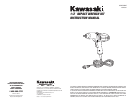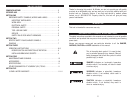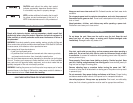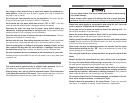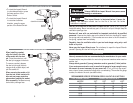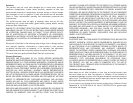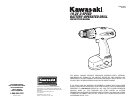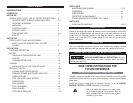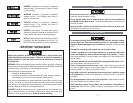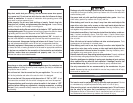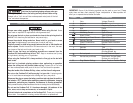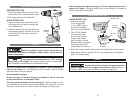
SAFETY RULES FOR IMPACT WRENCHES
Use only impact sockets. Non-impact sockets may shatter or break causing
injury and/or damage.
Ensure fastener and/or system will withstand the level of torque generated
by the tool. Excessive torque may cause breakage and possible personal injury.
Always wear safety goggles or eye protection when using this tool. Use a dust
mask or respirator for applications which generate dust.
Do not grasp the tool or place your hands too close to the spinning anvil. Your
hand may be lacerated or may cause injury.
Secure the material being worked on. Never hold it in your hand or across your
legs. Unstable support can cause loss of control and injury.
Position yourself to avoid being caught between the tool or side handle and walls
or posts. Should the socket or bit become bound in the work, the reaction torque
of the tool could crush your hand or leg.
Check to see that keys and adjusting wrenches are removed from the Impact
Wrench before switching the tool “ON”. Keys or wrenches can fly away at high
velocity striking you or a bystander.
When using the Impact Wrench, always maintain a firm grip on the tool with both
hands.
Keep the handle of the Impact Wrench dry, clean, and free from oil and grease.
Do not run the Impact Wrench while carrying it at your side. A spinning socket or
bit could become entangled with clothing and injury may result.
Disconnect the plug from the power supply and place the switch in the locked or
“OFF” position before making any assembly adjustments, changing accessories,
performing any inspection, maintenance or cleaning procedures. Such preventive
safety measures reduce the risk of starting the tool accidentally.
Do not use the Impact Wrench if it has been damaged, left outdoors in the rain,
snow, wet or damp environments, or immersed in liquid.
Maintain labels and nameplates on the Impact Wrench. These carry important
information. If unreadable or missing, contact Alltrade for a replacement.
6
TOOL USE AND CARE
Use clamps or other practical ways to secure and support the workpiece to a
stable platform. Holding the work by hand or against your body is unstable and
may lead to loss of control.
Do not force tool. Use the correct tool for your application. The correct tool will
do the job better and safer at the rate for which it is designed.
Do not use the tool if the power switch does not turn it “ON” or “OFF”. A tool that
cannot be controlled with the switch is dangerous and must be repaired.
Disconnect the power cord plug from the power source before making any
adjustments, changing accessories or storing the tool. Such preventive safety
measures reduce the risk of starting the tool accidentally.
Store idle tools out of reach of children and other untrained persons. Tools are
dangerous in the hands of untrained users.
Maintain tools with care. Keep cutting tools sharp and clean. Properly maintained
tools with a sharp cutting edge are less likely to bind and are easier to control.
Check for misalignment or binding of moving parts, breakage of parts, and any
other condition that may affect the tool’s operation. If damaged, have the tool
serviced before using. Many accidents are caused by poorly maintained tools.
Use only accessories that are recommended by the manufacturer for your model.
Accessories that may be suitable for one tool may create a risk of injury when used
on another tool.
SERVICE
Tool service must be performed only by qualified repair personnel. Service or
maintenance by unqualified personnel may result in a risk of injury.
When servicing a tool, use only identical replacement parts. Follow instructions
in the Maintenance section of this manual. Use of unauthorized parts or failure to
follow Maintenance Instructions may create a risk of shock or injury.
5



